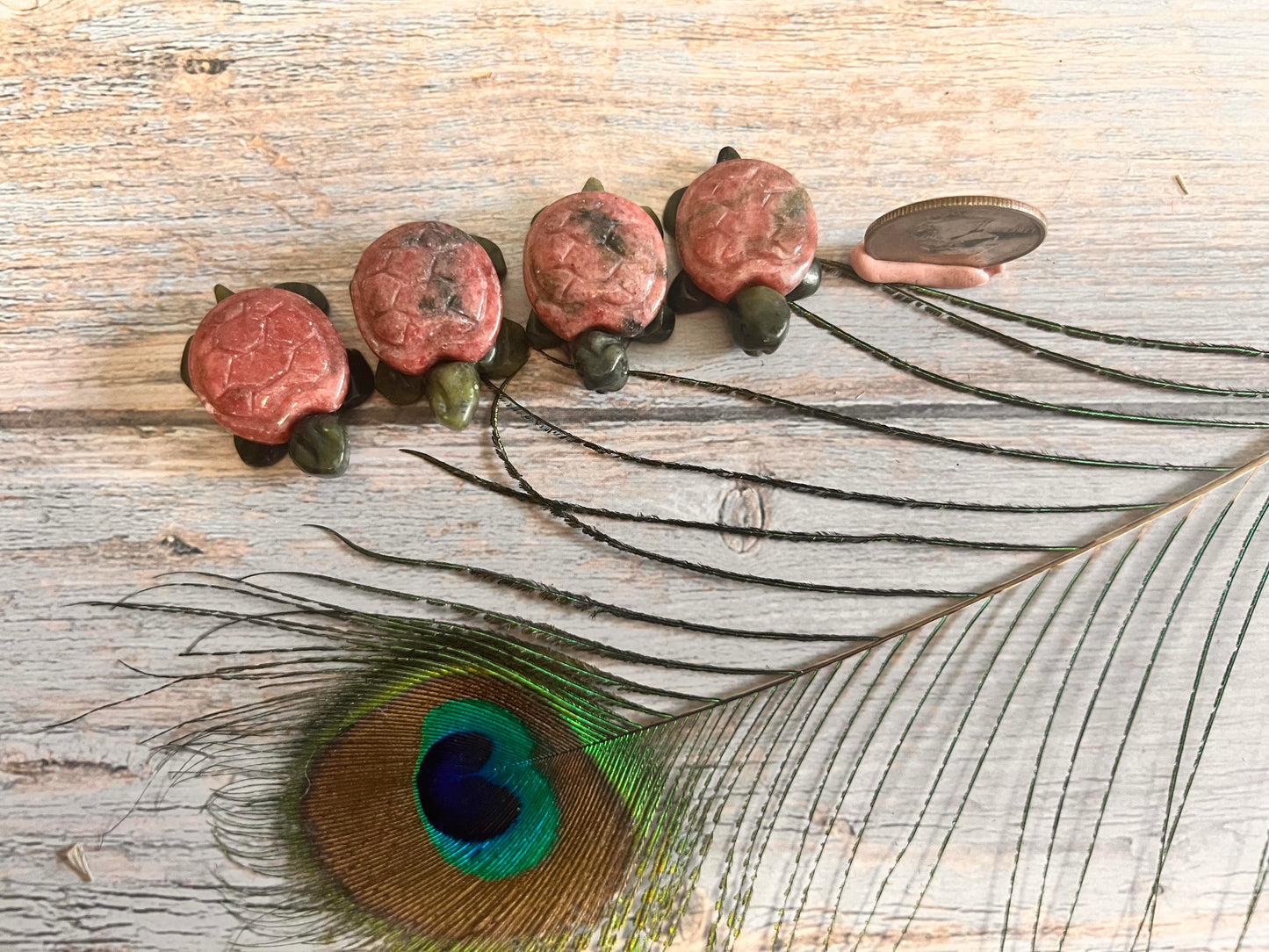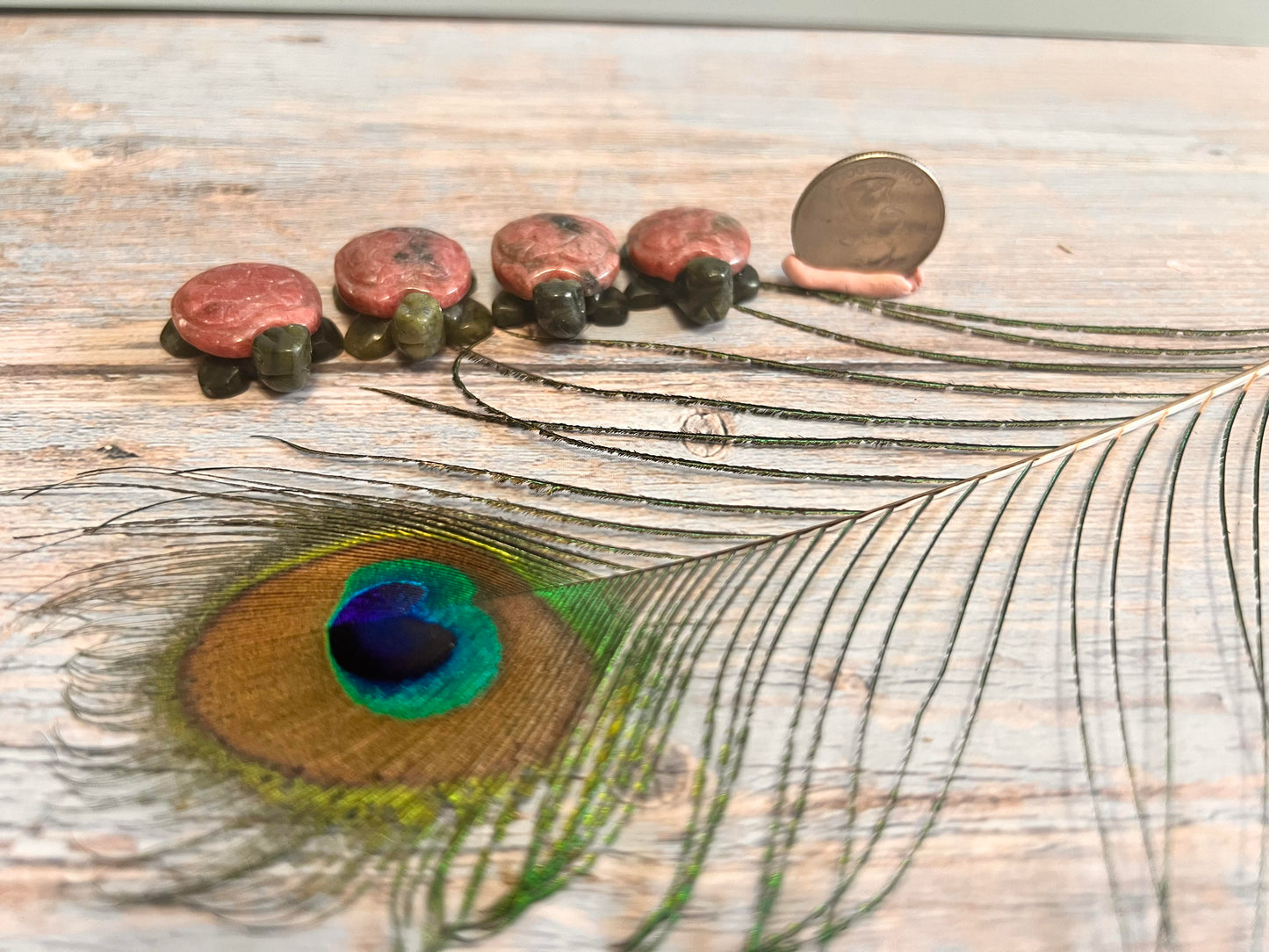Rhodonite & Serpentine Turtle
Rhodonite & Serpentine Turtle
Couldn't load pickup availability
Rhodonite and serpentine are both distinct minerals with unique characteristics. Here's an overview of each:
Rhodonite:
-
Color and Appearance: Rhodonite is typically pink to red in color, often with black manganese oxide veins or patches. It has a vitreous to pearly luster and is translucent to opaque.
-
Composition: Rhodonite is a manganese inosilicate mineral with the chemical composition MnSiO₃. Its pink color comes from the presence of manganese.
-
Sources: Rhodonite is found in various locations worldwide, including Russia, Sweden, Australia, Brazil, Canada, and the United States (especially in New Jersey and Massachusetts).
-
Uses: Rhodonite is popular in jewelry, carvings, and ornamental objects due to its attractive pink color and often striking black veining. It is also used as a lapidary material and occasionally in architecture.
-
Metaphysical Properties: In metaphysical beliefs, rhodonite is associated with emotional healing, love, and compassion. It is thought to promote balance and harmony, helping to resolve conflicts and encourage forgiveness.
-
Care and Maintenance: Rhodonite is relatively durable with a Mohs hardness of about 5.5 to 6.5. It can be cleaned with warm, soapy water and a soft cloth. Avoid exposure to harsh chemicals and prolonged sunlight to prevent color fading.
Serpentine:
-
Color and Appearance: Serpentine is usually green in color, ranging from light yellowish-green to dark green. It can also occur in shades of brown, yellow, or white. Serpentine often has a waxy or greasy luster and can be translucent to opaque.
-
Composition: Serpentine is a group of minerals that are hydrated magnesium silicates, often containing traces of other elements such as iron, nickel, and chromium.
-
Sources: Serpentine is widespread and found in many parts of the world. Important sources include the United States (California, Pennsylvania), Afghanistan, China, Italy, and New Zealand.
-
Uses: Serpentine has been used as a decorative stone, architectural material, and carving stone for centuries. It is also used as a gemstone in jewelry, where it is typically polished into beads or cabochons.
-
Metaphysical Properties: In metaphysical beliefs, serpentine is associated with cleansing and renewal. It is believed to aid in meditation and spiritual exploration, promoting inner peace and balance.
-
Care and Maintenance: Serpentine is generally softer than rhodonite, with a Mohs hardness ranging from 2.5 to 4.5. It should be handled gently to avoid scratches and can be cleaned with mild soap and water. Avoid exposure to acids and harsh chemicals, as they can damage the stone.
Both rhodonite and serpentine are valued not only for their physical properties but also for their perceived metaphysical properties and aesthetic appeal. If you have more specific questions about either of these minerals, feel free to ask!



